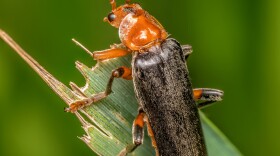Insects and their arthropod relatives are incredibly important to our lives and to the health and functioning of our ecosystems.
They provide invaluable services like pollination, nutrient recycling, decomposition of all sorts of matter …and of course, they’re a source of food for many animals up and down the food chain, from birds to fish to mammals, and even other insects. In other words, they’re what’s for dinner for many things.
As something that’s eaten by so many other animals, insects and arthropods have evolved a variety of strategies to avoid becoming a meal.
· Some evolved to be distasteful and often advertise that with bright colors.
· Some developed effective defenses, like a venomous sting or claws that can pinch.
· Some blend in so perfectly with their surrounding that they are practically invisible.
· And for others, their strategy to avoid becoming someone else’s next meal is to look like something nobody else wants to eat.
Found all across the United States, the species Ponometia candefacta has evolved to have an unappealing appearance. If you came across it perched on a leaf, you might quickly turn your gaze to something else too.
What, might you ask, is this species’ common name? The Olive Shaded Bird Dropping Moth.
Looking convincingly like the byproduct of a bird’s recent meal, this moth’s poop-like appearance is its super power.
Largely white in coloration, with patches of brown, olive green, and grey, the Bird Dropping Moth can rest a little easier during the day than it’s more appetizing appearing relatives.
So the next time you spot an unappealing spot of bird poo, think of the Olive Shaded Bird Dropping Moth and it’s ingenious (if not slightly disgusting) disguise.





